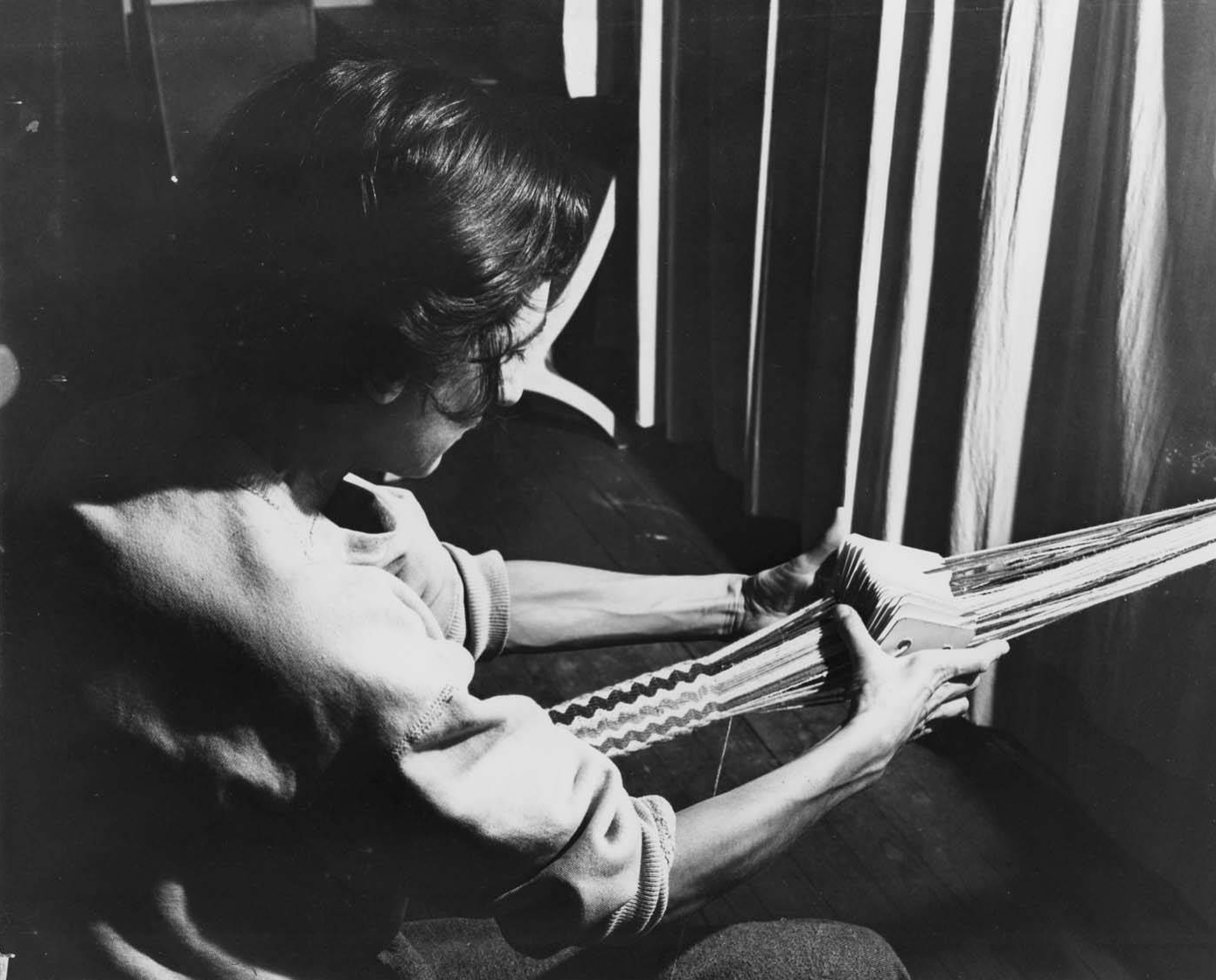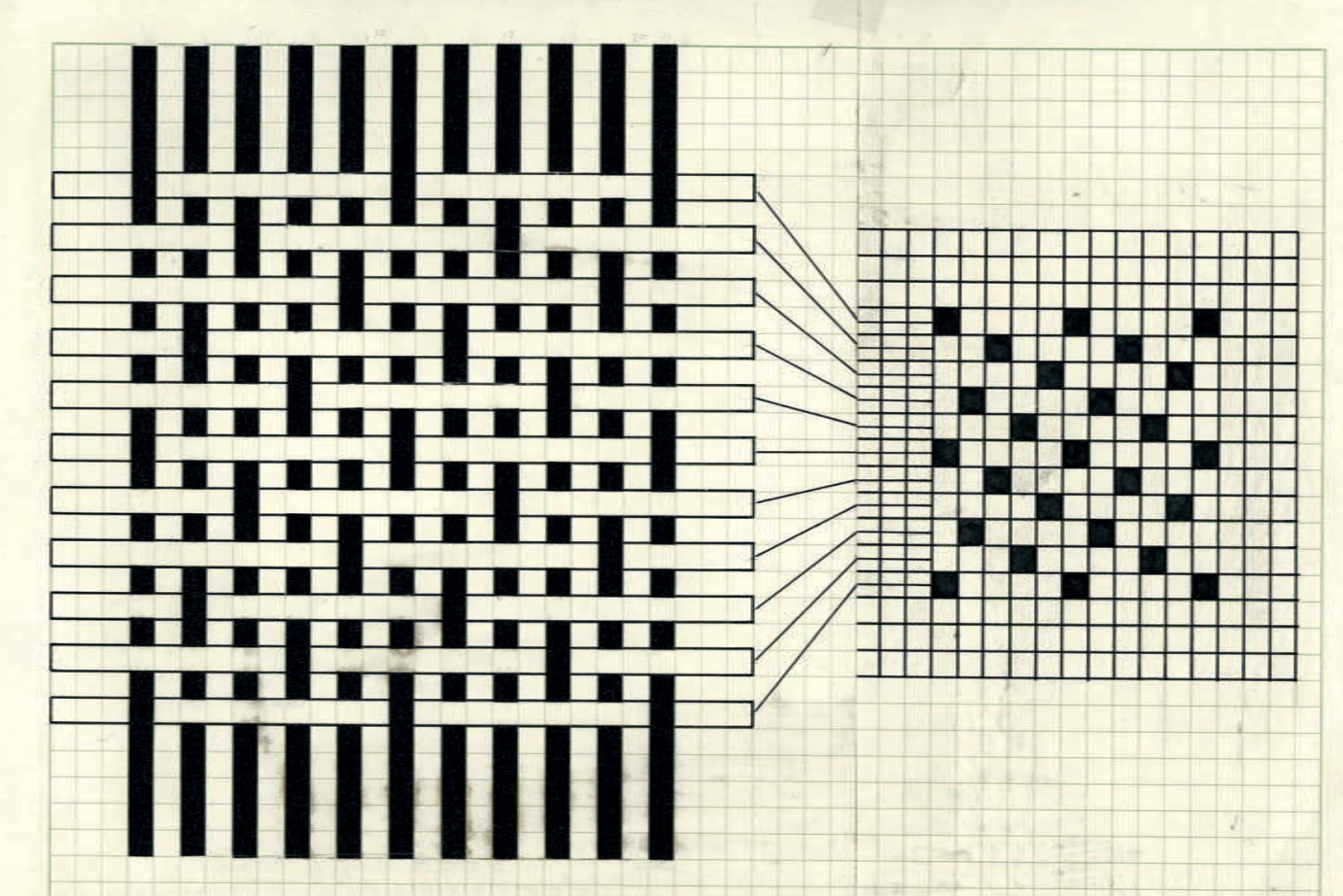Anni Albers [↓] anticipated Dehn's linking art and science through craft in her 1937 essay "Work with Material": "All art work, such as music, architecture, and even religion and the laws of science, can be understood as the transformed wish for stability and order." Unlike Dehn's more theoretical perspective, Albers is quick to follow general assertions like this with what she views as their practical implications, especially for the art student and teacher. She continues,  In class we will explore some of the laws inherent to weaving, the medium to which Anni Albers contributed so much, as artist, educator, and author.
In class we will explore some of the laws inherent to weaving, the medium to which Anni Albers contributed so much, as artist, educator, and author.
But art work understood as work with a substance which can be grasped and formed is more suited for the development of the taste for exploration than work in other fields, for the fact of the inherent laws of material is of importance. They introduce boundaries for a task of free imagination.

The structure of a fabric or its weave — that is, the fastening of its elements of threads to each other — is as much a determining factor in its function as is the choice of the raw material. In fact, the interrelation of the two, the subtle play between them in supporting, impeding, or modifying each other’s characteristics, is the essence of weaving.
The fundamental constructions, in common with all fundamental processes, have a universal character and are used today, as they were in our early history, here and everywhere. They show the principle of textile construction clearly. With only a few exceptions, all other constructions are elaborations or combinations of the basic three: the plain weave, the twill, and the satin weave.
So begins Anni Albers' outline of woven textile constructions. Following Dehn's lead, we will approach each construction as grounds for applied mathematics. What are the elements of such constructions? How are elements within a construction related to each other? What properties distinguish one construction from another?

To be continued in class...
September 24, 2025
Weaving
Reading:
Weaving
Reading:
The Fundamental Constructions (Anni Albers)
Resources:
Draft Notation (Anni Albers)